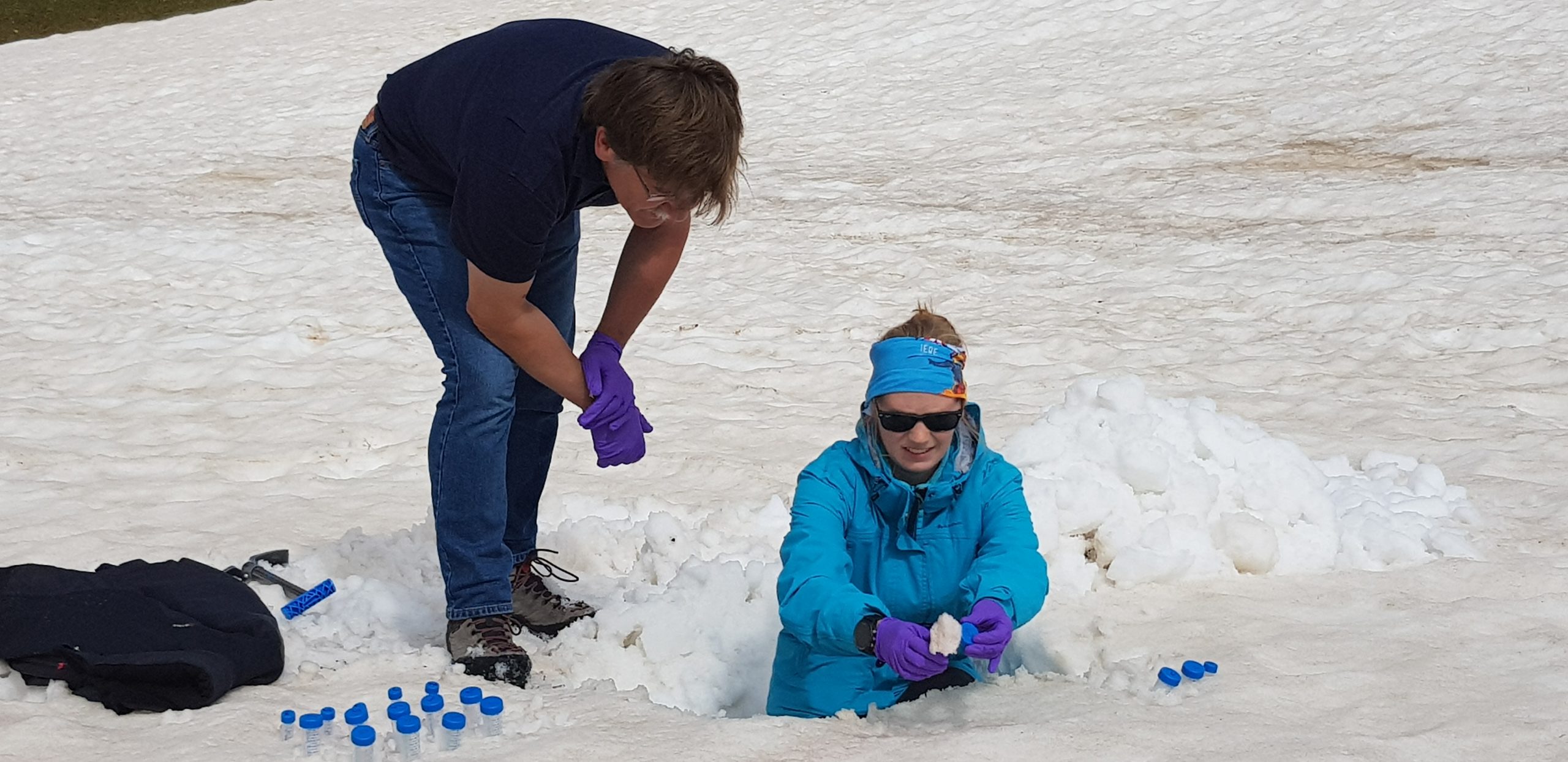
07 Jun Does the biodiversity of microalgae depend on elevation?
Alpine mountains show an altitudinal zonation, well known to hikers, from deciduous forests, mixed forests, coniferous forests, to shrubs, alpine meadows, and finally a level dominated by a mineral landscape where we find glaciers – Figure, see (1) – .
Climate change shows an increase in the average temperature and the atmospheric content in CO2. This affects the fragile and complex equilibrium within the ecosystems and environments found in mountains, which is impossible for us to decipher without a better knowledge of the structure and dynamics of the biodiversity occupying each natural habitats. While the flora and fauna are familiar to us, the microflora is invisible and we do not perceive the upheavals that affect it.

The microscopic component of biodiversity plays an essential role, but how to study it without having made an inventory and knowing its spatial and temporal distribution? This is striking for algae, well known in oceans, lakes and rivers, but less studied in all the other environments.
As part of the PhD thesis of Adeline STEWART (2021) , co-supervised by Eric MARECHAL (LPCV), Eric COISSAC (LECA) and Jean-Gabriel VALAY (Jardin du Lautaret) the distribution of algae was explored, from 1,000 to 3,000 meters above sea level, at 5 sites in the French Alps, where soil samples were collected every 200 meters – Figure, see (2) – . To conduct the investigation using the environmental DNA that any organism leaves in the soil, the researchers developed a method to detect a signature corresponding to microalgae. This method called metabarcoding made it possible to identify the presence of green algae corresponding more particularly to the phylum of “Chlorophytes” and within these, the class of “Chlorophyceae”. They established that the DNA of algae represented a relatively small proportion of the diversity of eukaryotic organisms (organisms whose cells contain a nucleus). For the first time, the natural area of occupation of about a hundred of groups, genera and species has been positioned vertically – Figure, see (3) – . An altitudinal zonation has in particular been established for about fifty species. The genus Sanguina, which gives this characteristic color to red snows, has only been found in soils above 2,000 m elevation. This zonation, invisible to our eyes, is finally revealed and opens up a field of study of biodiversity in a mountain environment in full upheaval.
This work has been published by the ALPALGA consortium:
Adeline Stewart, Delphine Rioux, Frederic Boyer, Ludovic Gielly, François Pompanon, Amélie Saillard, Wilfried Thuiller, Jean-Gabriel Valay, Eric Marechal and Eric Coissac. (2021) Altitudinal zonation of green algae biodiversity in the French Alps. Frontiers in Plant Science. doi: 10.3389/fpls.2021.679428



No Comments